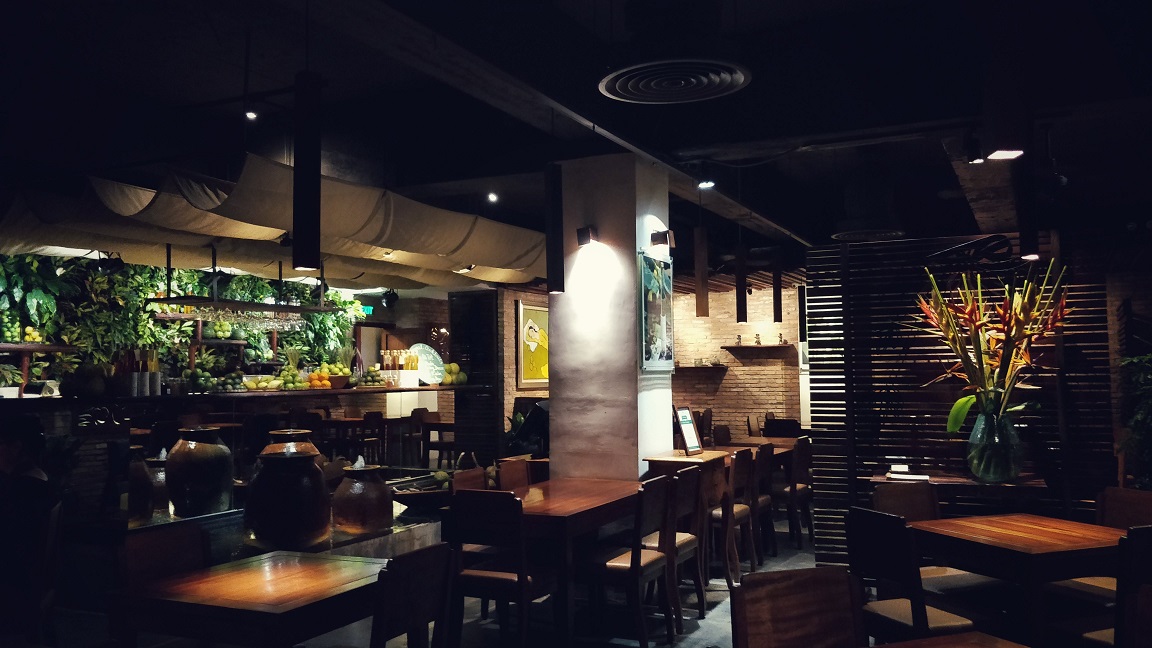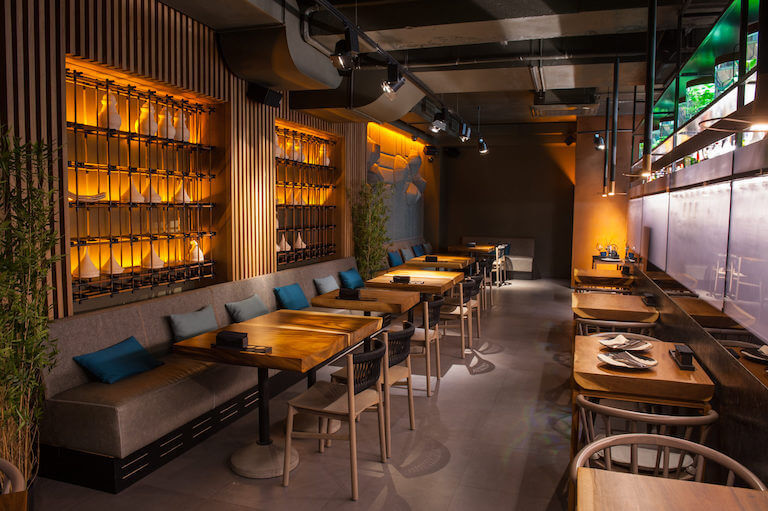Savor Authentic Oriental Food With a Pan-Asian Twist for a Cooking Experience
Beginning on a culinary trip via genuine Oriental food, boosted with a Pan-Asian twist, supplies a special opportunity to check out the rich tapestry of flavors that define the region's varied culinary traditions. As you consider these attracting meals, take into consideration the cultural narratives and historic influences that form them, each bite offering a tale waiting to be discovered. Best ambiance restaurants Islamabad.

Checking Out Pan-Asian Tastes
In the world of worldwide gastronomy, Pan-Asian food stands out for its amazing diversity and the harmonious interplay of flavors from different Asian cultures. This culinary strategy celebrates the abundant traditions and unique ingredients discovered throughout the continent, developing a tapestry of preferences that is both interesting and satisfying. Key to Pan-Asian food is its capability to stabilize different flavors-- sweet, salted, spicy, and sour-- while highlighting the quality and top quality of each component.
From the umami-rich soy sauce of Japan to the intense chili peppers of Thailand, Pan-Asian cuisine offers an extensive palette of tastes. These aspects are commonly integrated in creative means, improving dishes with layers of complexity. For instance, the use of fragrant natural herbs such as lemongrass and cilantro, usual in Vietnamese and Thai food, adds a refreshing illumination to recipes, while the unification of coconut milk provides a creamy, abundant structure.
The focus on fresh fruit and vegetables and fragrant seasonings makes certain that each meal is not just a banquet for the preference buds however additionally for the detects. Pan-Asian cuisine invites restaurants to start a culinary trip, discovering the huge and differed landscapes of Oriental gastronomy with every bite.
Blend Recipes to Attempt
While Pan-Asian food is celebrated for its typical tastes, the contemporary cooking landscape is progressively accepting combination dishes that blend these classic elements with influences from various other areas. This innovative approach not just honors the rich heritage of Oriental cookeries however likewise presents unique taste experiences that appeal to contemporary tastes buds.
A prime example of such a fusion dish is the Korean-Mexican taco, where marinaded bulgogi beef is wrapped in a cozy tortilla, topped with kimchi and a hot gochujang-infused salsa. This combination marries the vibrant, savory tastes of Korea with the vibrant, fresh aspects of Mexican cuisine. In a similar way, sushi burritos have actually obtained appeal, integrating the delicate virtuosity of Japanese sushi with the hearty, hand-held benefit of a burrito, usually including blend ingredients like tempura shrimp and avocado with a drizzle of wasabi mayo.
Another significant dish is Thai curry ramen, which infuses the velvety, aromatic spices of Thai curry into the calming brew of traditional Japanese ramen, developing an unified blend that tantalizes the senses. These combination dishes expand past simple uniqueness; they stand for a culinary discussion between societies, motivating exploration and innovation worldwide of Pan-Asian cuisine.
Vital Active Ingredients and Spices
To absolutely value Pan-Asian cuisine, one have to understand the essential active ingredients and seasonings that form its foundation. This varied cooking design attracts from a rich tapestry of Eastern practices, using an unified blend of structures and tastes.
Fragrant elements are essential, with garlic, lemongrass, and ginger being ubiquitous throughout different Pan-Asian dishes. These ingredients offer a great smelling base that enhances the intricacy of flavors. Spices such as star anise, cardamom, and cinnamon introduce warmth and personality, echoing influences from areas like China and India.

Food Preparation Techniques and Tips
Mastering the art of Pan-Asian cuisine requires experience with its unique food preparation methods, each adding to the vivid tapestry of tastes this culinary practice is commemorated for. Central to these approaches is the stir-fry, a quick cooking technique that maintains the nutritional integrity and dazzling colors of components. Utilizing a frying pan, the stir-fry approach permits also warm circulation, important for attaining the particular appearance and flavor balance of Pan-Asian dishes.
Another essential technique is steaming, specifically prevalent in Chinese cuisine. This gentle method maintains the all-natural tastes and nutrients of active ingredients, making it perfect for seafood and vegetables. Dumplings, a cherished staple, usually profit from steaming, leading to soft, succulent structures.
Grilling, likewise integral, passes on smoky midsts to meals such as Oriental bulgogi or Japanese yakitori (best asian restaurant Islamabad). This technique commonly involves marinading components, allowing tastes to pass through deeply before cooking over an open fire or warmer
Last but not least, grasping the art of balancing tastes-- sweet, sour, salty, bitter, and umami-- is crucial. Appropriately layering these components can raise a recipe from common to remarkable, providing a complex and pleasing cooking experience that embodies the essence of Pan-Asian food.
Eating Experiences Worldwide
Around the world, Pan-Asian food offers an this hyperlink unrivaled eating experience, celebrated for its rich tapestry of flavors and lively discussions. This culinary phenomenon has actually transcended social borders, capturing the hearts and palates of food fanatics worldwide. In multicultural cities like New York, London, and Sydney, Pan-Asian dining establishments function as melting pots where culinary practices from Thailand, Japan, China, and past converge, providing restaurants with a diverse mix of dishes that highlight the area's diversity.
The worldwide charm star pizza of Pan-Asian cuisine depends on its capacity to use both credibility and technology. Cooks masterfully wed traditional components such as lemongrass, soy sauce, and miso with contemporary strategies, leading to meals that are both refreshingly new and acquainted. This blend enables diners to start a culinary trip that respects heritage while accepting modernity.
In addition, eating experiences are boosted through attentively made atmospheres that mirror the principles of Pan-Asian visual appeals. From minimalist Japanese-inspired insides to vibrant Thai-themed areas, each dining establishment supplies a distinct setting that complements the culinary offerings. Therefore, clients are not merely consuming a dish but partaking in a cultural experience, making Pan-Asian eating an absolutely global sensation.
Conclusion
The exploration of Pan-Asian food supplies a profound understanding of the elaborate interaction of tastes and culinary practices across Asia. By welcoming combination dishes such as Thai curry ramen and sushi burritos, the culinary trip not just highlights the versatility of conventional ingredients but likewise showcases cutting-edge contemporary methods. This gastronomic experience, enhanced by important seasonings and cooking techniques, offers a special opportunity to value the social variety and cooking artistry that define Pan-Asian cuisine on an international range.
Getting started on a cooking trip via genuine Eastern food, enhanced with a Pan-Asian spin, provides an one-of-a-kind possibility to explore the rich tapestry of flavors that specify the region's varied cooking practices.In the world of international gastronomy, Pan-Asian cuisine stands out for its exceptional variety and the harmonious interaction of tastes from various Oriental societies. Key to Pan-Asian cuisine is its capability to stabilize contrasting tastes-- pleasant, salty, spicy, and sour-- while highlighting the quality and high quality of each active ingredient.
